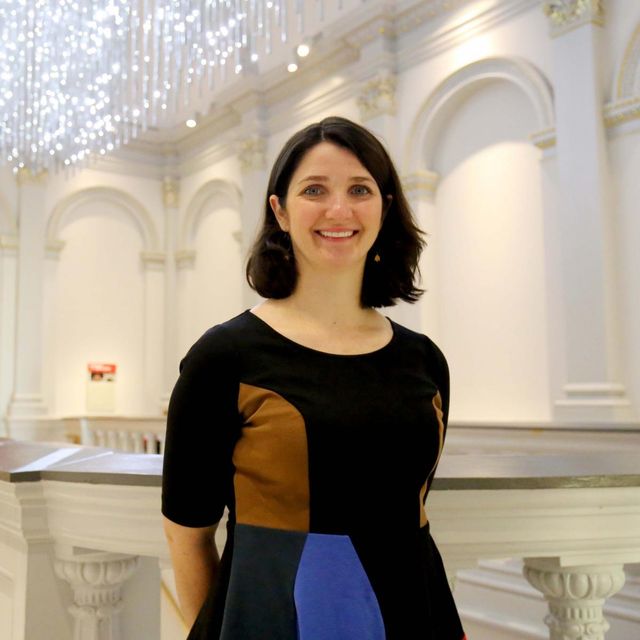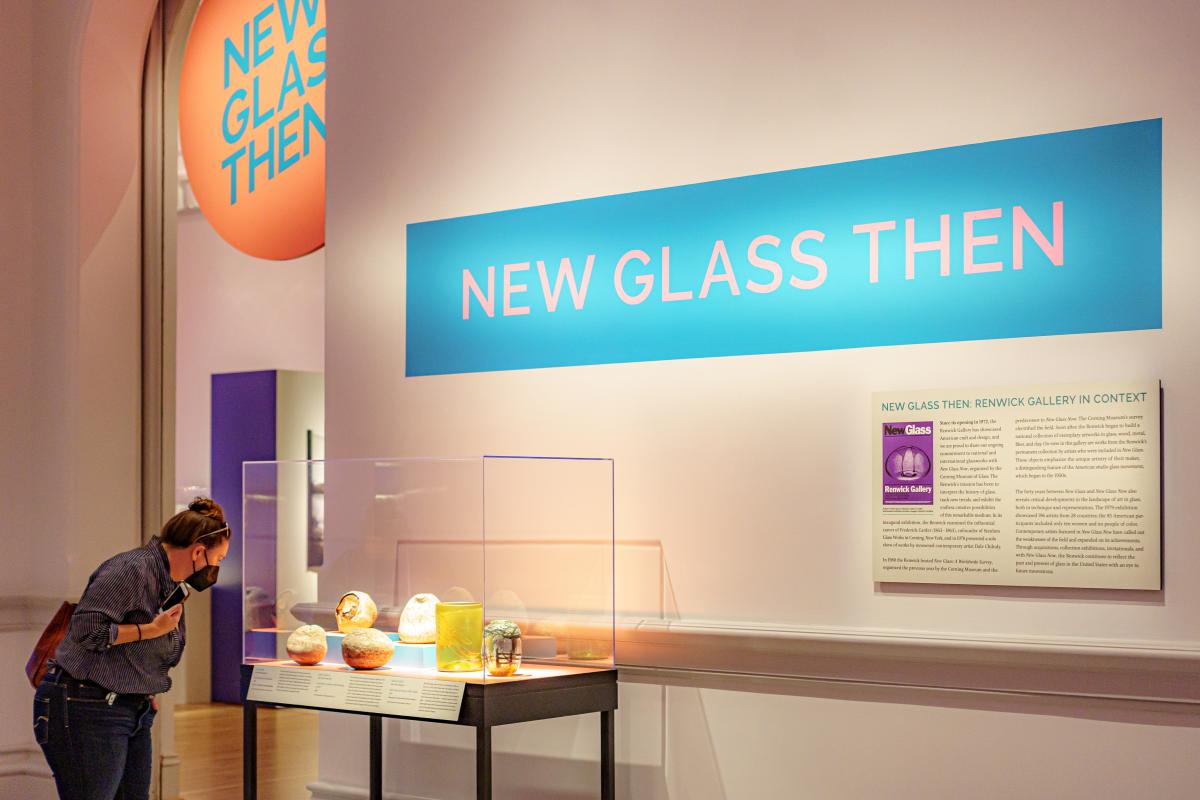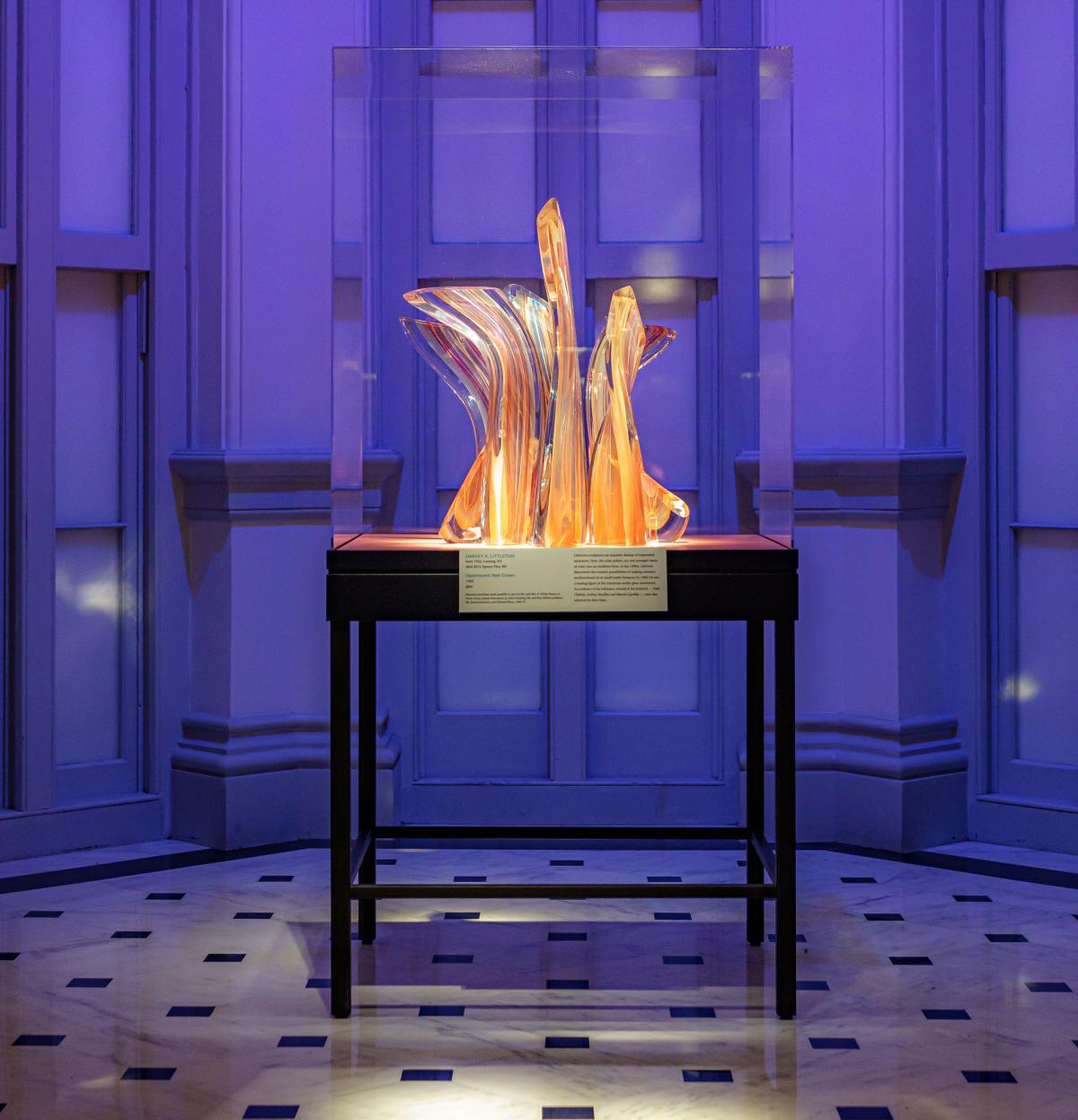
New Glass Now, is not the first exhibition at the museum dedicated to the medium of glass. The Renwick has a long history of showcasing the innovation, artistry, and wonder of glass art. Since opening in 1972, our goal has been to interpret the history of glass, track new trends, and exhibit the endless creative possibilities of this versatile medium.
For an inaugural exhibition in 1972, the museum examined the influential career of Frederick Carder, cofounder of Steuben Glass Works in Corning, New York, known for traditional (and functional) glass objects. A few years later, the museum showcased the work of innovative artists who were at the time breaking all of the rules of glasswork. This included a 1978 solo exhibition of works by renowned artist Dale Chihuly.
In 1980 the Renwick hosted New Glass: A Worldwide Survey, organized the previous year by the Corning Museum of Glass, and the predecessor to New Glass Now. This global glass survey electrified the field and shaped the museum’s permanent craft collection.
Discover some of the artists featured in New Glass: A Worldwide Survey, whose work is now in SAAM’s permanent collection, and on view at the Renwick Gallery in our spin-off installation New Glass Then. These objects emphasize the unique artistry of their makers, a distinguishing feature of the American studio glass movement, which began in the 1950s.
Harvey K. Littleton’s Opalescent Red Crown is an exquisite drama of suspended animation. In the 1960s, Littleton discovered the creative possibilities of making abstract, nonfunctional art in small studio furnaces; by 1980, he was a leading figure of the American studio glass movement.
Before becoming an artist, Dominick Labino trained as an engineer and developed numerous recipes, processes, and tools for the glass industry. His invention of a glass marble with a lower melting point was a catalyst for the studio glass movement – the short and rapid melting cycle of the marbles made it possible for sculptural work to be done in a small studio kiln.
Tom Patti also forged a unique path in the glass community with a fine art and industrial engineering background. Solar Gray Bronze Riser Piece #2 is a futuristic sculpture made of commercial window glass. Patti fused individual panes and blew a bubble at their point of intersection, seamlessly blending precise, symmetrical forms with softened curves made by his own breath.
Marvin Lipofsky broke the mold of glass making. In the late 1970s, he collaborated with Gianni Toso at the Fratelli Toso factory on the island of Murano, Italy, where he took some of the molds used for making functional objects and cracked them. Then he blew hot glass through the broken mold to form protrusions and lumps on the nonfunctional orbs.
Karla Trinkley’s cast glass vessel looks like a sugary confection. She discovered — and eventually perfected — the pâte de verre (glass paste) method, where she crushes glass, melts it into a paste, and then casts it in a custom mold. Rosette is a vessel within a vessel where the solid inner wall of pastel green has ten radiating ribs connecting to the dusty rose exterior.
The forty years between New Glass: A Worldwide Survey and New Glass Now also reveals critical developments in the landscape of art in glass, both in technique and representation. The 1979 exhibition showcased 196 artists from 28 countries; out of the 85 American participants, only ten women were included and there were no artists of color. Contemporary artists featured in New Glass Now have called out the weaknesses in the field and expanded on its achievements. As we look to the future of glass, we are eager to continue supporting artists who challenge the status quo with an eye to innovation and inclusion.























